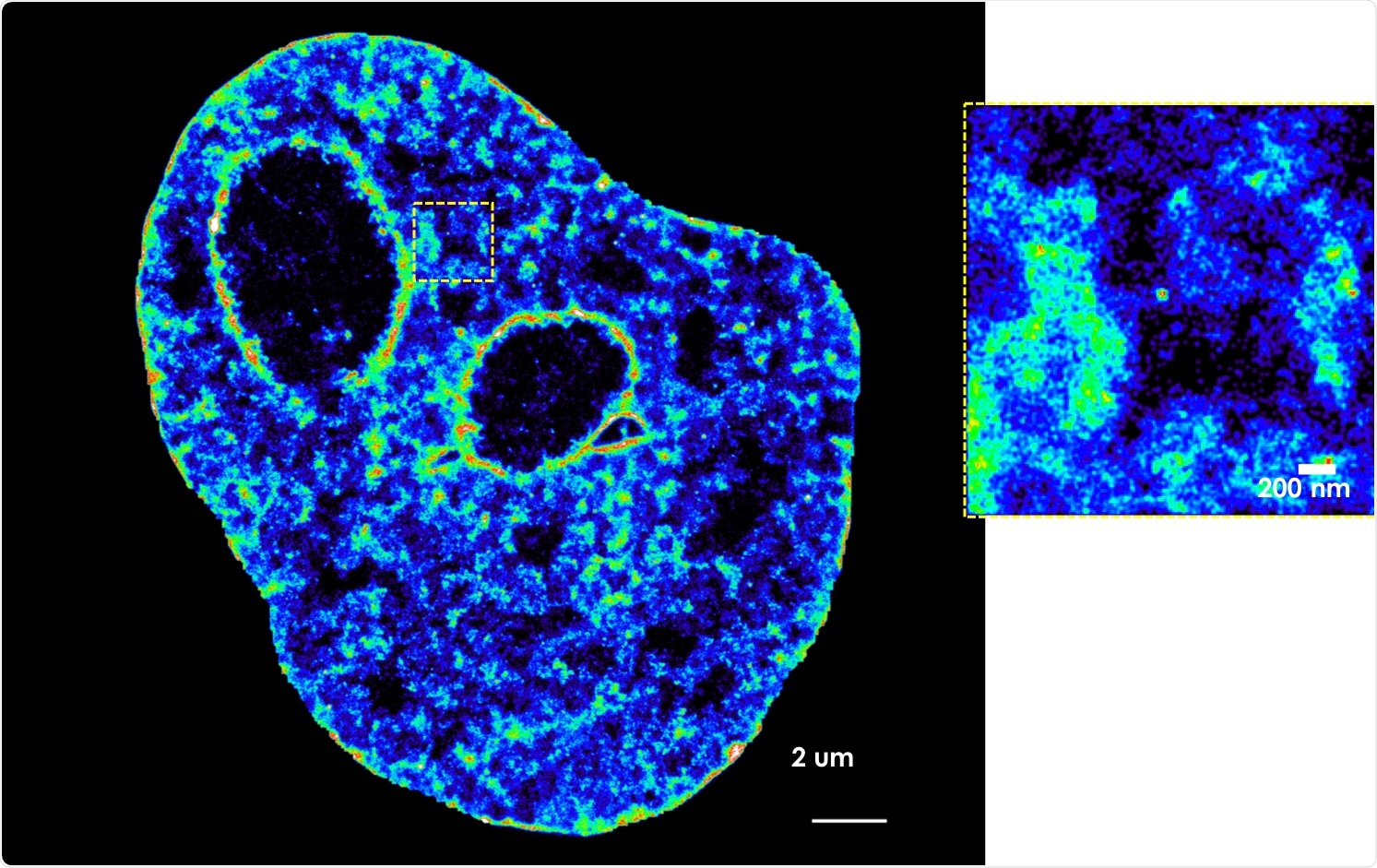Developments in the field of microscopy allowed scientists to picture loops of DNA strands for the first time. The images show how the human genome organizes in three-dimensional space at a greater resolution than what was achievable earlier.

Example of DNA pictured by state-of-the-art microscopy. Image Credit: Vicky Neguembor/Center for Genomic Regulation.
The outcomes of the research published in the Molecular Cell journal show that the process of copying DNA into RNA—transcription—indirectly shapes the structure of the genome.
A team of international researchers headed by Pia Cosma at the Centre for Genomic Regulation (CRG) in Barcelona and Melike Lakadamyali at the Perelman School of Medicine at the University of Pennsylvania in the United States identified that transcription produces a force that travels across DNA strands similar to ripples through water.
This force is called supercoiling and it causes the structural proteins, or cohesins, to “surf” across DNA strands, changing the scaffold’s structure and morphing the overall shape of the genome. Even though it is widely known that genome organization controls gene transcription, this is the first time scientists identified transcription to influence genome organization, conversely through supercoiling.
The scientists ascertain that this novel discovery of the force can have future implications in understanding genetic diseases like Cornelia de Lange syndrome, which is due to mutations in genes encoding for cohesin or cohesin regulators. The study results may also be appropriate for developmental disorders linked to how chromatin folds, apart from unraveling new areas of research in cancer development and genome fragility.
The scientists analyzed the biological mechanisms that permit 2 m of DNA to be squeezed into a tight space in each human cell. In this condensed state, the DNA, alternatively called chromatin, consists of numerous loops that bring together different regions of the genome that would generally be far apart.
The ensuing physical proximity is vital for transcribing DNA into RNA, which in turn makes proteins, thereby rendering chromatin looping a basic biological mechanism for human health and disease.
Chromatin looping is what allows individual cells to switch different information on and off, which is why for example a neuron or a muscle cell with the same genomic information can still behave so differently. Loops are also one of the ways the genome gets compacted to fit into the nucleus.”
Vicky Neguembor, Study First Author and Staff Scientist, Center for Genomic Regulation
“What we have found is important because it shows the biological process of transcription plays an additional role beyond its fundamental task of creating RNA that eventually turn into proteins. Transcription indirectly compacts the genome in an efficient manner and helps different regions of the genome talk to each other,” adds Neguembor.
Although techniques employed earlier to analyze this process could estimate the location of the loops, they could not predict their actual shape or their appearance within the cells.
To enhance the image resolution, the scientists employed a special type of microscopy that uses high-power lasers under specific chemical conditions to track the blinking of fluorescent molecules. The method offers higher resolution, around 10 times higher, than conventional microscopy.
Along with state-of-the-art imaging analysis techniques, the scientists could determine chromatin loops and the cohesins that hold the structure together like paper clips, within intact cells.
Source:
Journal reference:
Neguembor, M. V., et al. (2021) Transcription-mediated supercoiling regulates genome folding and loop formation. Molecular Cell. doi.org/10.1016/j.molcel.2021.06.009.